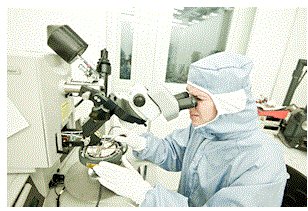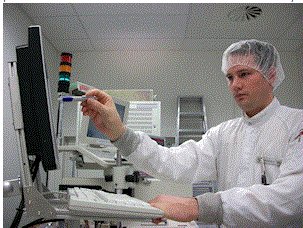The pursuit of continuous improvement begins with the process of capturing events which are non-complaint or OOS (Out Of Specification), applying a corrective action to appease the problem, then using the data captured to understand the root cause of non-conformities and finally developing a preventive action for that particular root cause to prevent the recurrence of such an event.
The above statement gives the most simple and high level understanding of the CAPA system which is the Corrective Action & Preventive Action, management system. Depending on the complexity of the process/product a CAPA system can range from a fairly simplistic to highly layered and collaborative endeavor, which requires inputs and actions from many functional areas, within and beyond the organization which is implementing the said system. For industries like the Semiconductor, Medical devices, Pharmaceutical, Bio-tech, Chemical processing, Electronics and Automobile etc., the cost of non-compliance can prove extremely high, not only in monetary terms, but also in terms of loss of reputation, reverse logistics resulting from product re-call, termination of certifications and diminished growth in potential markets.
Every time a company recalls a lot of faulty products it not only loses market share in its current market, due to instant nature of information dissemination, it loses potential customers in markets it wishes to venture out to, in the future, such losses are extremely hard, if not impossible to calculate. Today, we will look at ways in which modern MES applications are making CAPA management a faster and more effective exercise, saving millions of dollars for organizations from a diverse industrial background.
In a typical manufacturing operation, the role of CAPA begins from the point a new batch of raw material arrives at the plant and then continues to the WIP, through the production process, where the material is handled by operators and processed by the plant's equipment. Finally, the product reaches the EOL and is packaged as the finished product and the role of CAPA ends with the receipt of feed-back from customer asserting their satisfaction or non-reporting of any complaint for a standard period of time after shipment. A nonconformity event or incident can occur at any instance, during the process execution, thus CAPA is an operation wide endeavor.
From detecting anomalies in the raw material, to a defect caused during an activity, from analyzing specs to inspection of production samples, an MES application needs to apply CAPA seamlessly throughout a production process, all the while trying to make the process more paperless and more real-time. To successfully implement such a system, an MES needs to record every event/transaction as it happens in a process and then be capable of comparing it with set standards/specs and historical data to report any non-compliance detected. Once such an event is detected, it needs to be recorded and communicated to individuals responsible for that particular transaction, helping to assign ownership of issues and ensuring the correct people are aware of the issues arising in their area of expertise/control.
The MES should enable recording of these events with evidence such as photographs, scanned reports, graphs, alerts etc. If the problem which occurred is standard or known, the MES should be capable of implementing the previous CAPA assigned for such an event automatically. This can be in the form of revision of specs for the next activity or removal of the defected lot from the production line or any other predetermined course of action deemed correct by the process owners.
If the event detected is new, it should be recorded as a new defect/non-compliance in the database, to enable a development of a defect and root cause library. The concerned personnel should be notified and any action suggested should be authenticated by the appropriate person, before it is used as a corrective action. Once the new defect is recorded and a corrective action taken, the system should generate a report enabling its root-cause analysis. After the analysis, the prescribed preventive action for such defects should be implemented automatically, whenever a similar event is encountered in future.
Also, after an action item is assigned to a person, the system should be capable of tracking the progress of the action and be able to send reminders if the activity remains pending. If it is completed, the application should send a closing report to ascertain that the problem was mitigated and record it for auditory compliance, in the requisite format, with the requisite Electronic Signatures. As we saw in an earlier post, the importance of recording data in the correct format is a vital aspect in compliance, the MES needs to file and retrieve all such CAPA related information for the sake of ensuring 100% compliance.
The MES application needs to be designed such that it is able to integrate with other enterprise wide applications, like the ERP, CRM or other such applications. This will help drive improvement from both ends of the supply chain. Data from the supplier end which comes from the ERP can help find material defects faster and help apply CAPA even before the material enters the production line. Similarly, customer complaints can help improve the CAPA system and the MES should be able of reporting such complaints to the shop-floor. The resulting improvements can be used to improve the performance of suppliers, by improving the way in which requirements are placed and specs are designed. Another alternative is to use the MES as an improvement vehicle for the supplier's process to ensure that they meet requirements and provide accurate inputs every single time.
Besides this external collaboration, the MES needs to be designed is such modular fashion that each module, be it, SPC, Inventory Management, WIP Tracking or Engineering, should be capable of supporting CAPA through their own functionality. Let's say in a Semiconductor plant, after a chemical wash, if every lot has a defect in a particular wafer, the SPC/Quality module should be able to highlight this as an abnormal event, thereby mandating a CAPA action. Once the defect is highlighted and flagged, the CAPA module kicks in and saves the day, by applying a corrective action, then helping to determine the root cause and finally assign a preventive action for future occurrences. Only when the MES is sufficiently capable to accommodate all the aspects discussed above, it can truly implement a CAPA management system and help continuous process improvement
Read this and other blog entries here.



